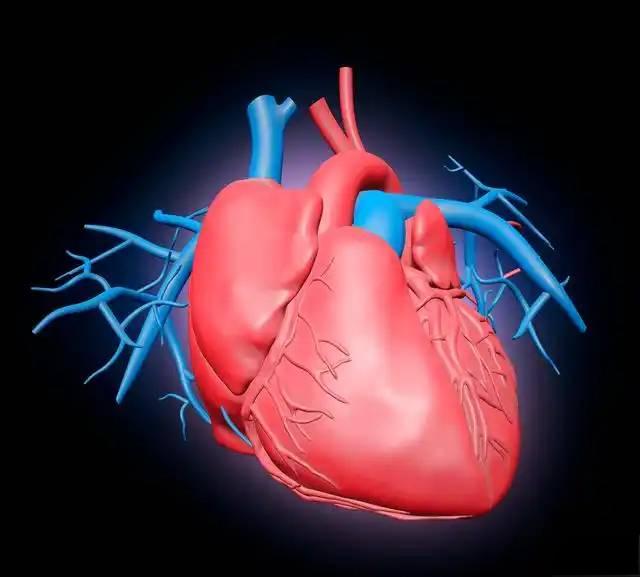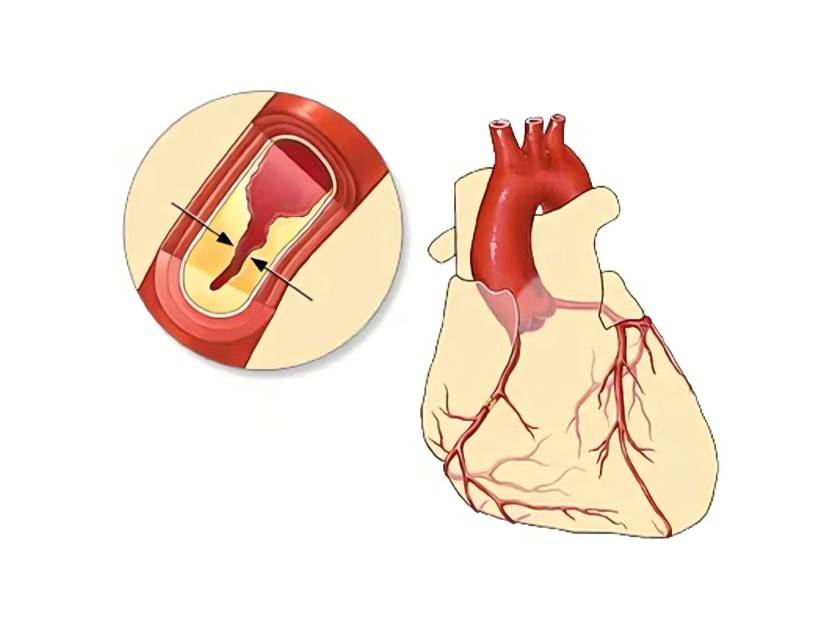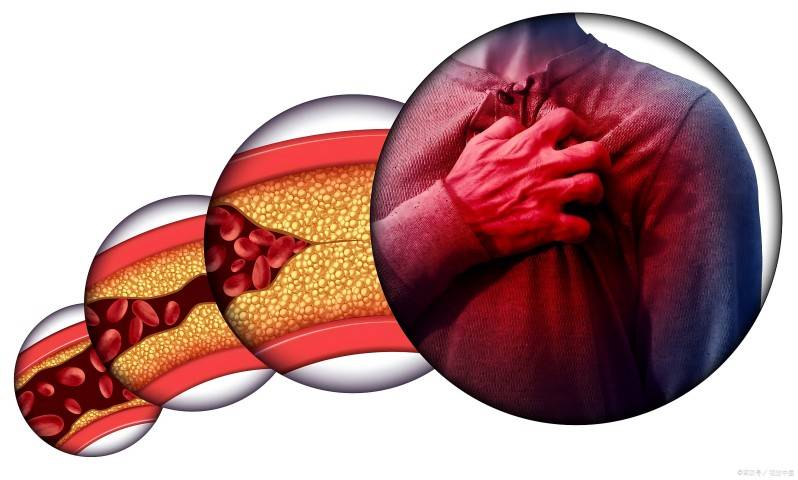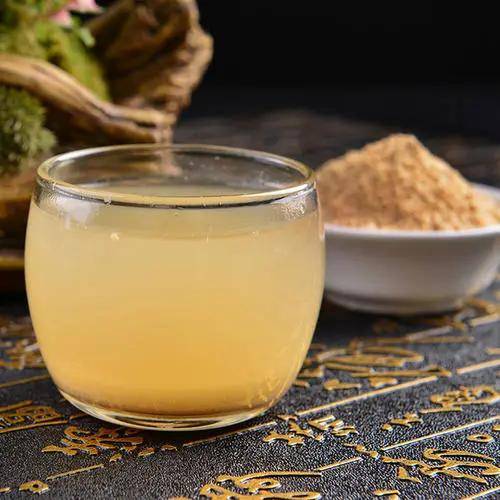Étude sur le Ginsenoside et cardiovasculaire
Modern pharmacological studies have confirmed that ginsenosides (GS) are the main active substances in ginseng. To date, more than 30 types of ginsenosides have been isolated from ginseng [1]. The total saponin is called ginsenoside R x, and each component is named R o, R a, R b1, R b2, R b3, R c, R d, R e, R f, Rg1, Rg2, Rg3, R h1, R h2, and R h3 in ascending order of the R f value from a thin-layer silica gel chromatogram. However, in recent years, most research on ginseng saponins has focused on R b1, R e, Rg1, R h2, etc. Ginseng saponins can be divided according to their chemical properties into: ginsenoside diol type (type A), including R b1, R b2, RC, R d, R h2, etc.; ginsenoside triol type (type B), including R e, R f, Rg1, Rg2, R hr, etc.; oleanolic acid type (type C) such as R o. Modern research has shown that ginsenosides have clinical significance for various diseases of the cardiovascular system, such as ischemic heart disease, arrhythmia, and heart failure [2]. The following is a summary of recent research on the pharmacological effects of ginsenosides on the cardiovascular system.
1. Effets sur la fonction myocardique
Tian Jianming et al. [3] ont utilisé une culture in vitro de cardiomyocytes pour préparer un modèle de cardiomyocytes hypoxiques et déficients en glucose, et ont constaté que le ginsénoside Rg2 augmentait significativement l’amplitude de battement et le taux de survie des cardiomyocytes hypoxiques et déficients en glucose. Il a également été observé dans des expériences que le Rg2 réduisait significativement la concentration de Ca2+ libre chez les cardiomyocytes hypoxiques et déficients en glucose, alors qu’il n’avait aucun effet significatif sur la libération de Ca2+ à partir des cardiomyocytes induite par KC l. À des concentrations élevées, il avait un léger effet inhibiteur sur l’afflux de Ca2+ extracellulaire causé par le CaC l2, tandis qu’à de faibles concentrations, il n’avait aucun effet significatif [4].
Wang Tianxiao et al. [5] established a pressure overload ventricular remodeling model by ligating the abdominal aorta of rats to study the effect of Ginsenoside dSur le remodelage ventriculaire chez les rats avec surcharge de pression hypertrophie myocardique et son mécanisme d’action. Il a été constaté que ginsenoside Rb a un effet protecteur sur le remodelage ventriculaire chez les rats, qui peut être lié à son mécanisme d’amélioration de la fonction systolique et diastolique ventriculaire gauche chez les rats avec le remodelage ventriculaire, augmentant l’activité enzymatique antioxydante, réduisant les dommages myocardiques causés par les radicaux libres et les substances vasoconstrictrices, et corrigeant le déséquilibre entre PGI2 et TXA2.
Su Dayuan et al. [6] ont également étudié les saponines du groupe de protopanaxadiol (PQD) extraites des feuilles de ginseng américain et ont constaté que les PQD peuvent efficacement prévenir le remodelage ventriculaire après un infarctus du myocarde chez les rats, augmenter significativement le taux maximal d’augmentation et de diminution de l’intra-pression ventriculaire gauche, et réduire significativement le volume ventriculaire gauche, le long axe ventriculaire gauche, le long axe ventriculaire gauche, Poids absolu du ventricule gauche et poids relatif du ventricule gauche. De plus, les PQD peuvent réduire considérablement les peroxydes lipidiques sériques et les niveaux d’angiotensine II et d’adrénaline du myocarde, et augmenter la superoxyde dismutase, la catalase et la glutathion peroxydase. On pense que cela pourrait être lié à l’inhibition de la production locale d’angiotensine II dans le cœur et à l’inhibition de la libération de catécholamines à partir des terminaisons nerveuses sympathiques, ainsi qu’à l’amélioration de la capacité antioxydante du muscle cardiaque.
En outre, des études sur les saponines de fruits au ginseng (GFS) ont montré que GFS peut améliorer les fonctions systolique et diastolique du muscle cardiaque, soulager l’échec de la pompe après un infarctus du myocarde, et réduire la consommation d’oxygène du myocarde, qui est bénéfique pour augmenter l’approvisionnement en sang du myocarde.
2 effet sur le choc cardiogénique
Un modèle chien de choc cardiogénique et d’insuffisance cardiaque A été créé en utilisant le sodium pentobarbital. Les effets du ginsénoside sur la pression artérielle (ta), la pression systolique ventriculaire gauche (LVSP), le taux d’augmentation de la pression ventriculaire gauche (LVdp/dtmax), la fréquence cardiaque (HR) et le débit cardiaque (CO) ont été observés. Les résultats ont montré que les saponines totales de Ginseng 10 mg/kg et 20 mg/kg, après injection intraveineuse, LVdp/dtmax, LVSP, BP et CO ont toutes augmenté, la pression ventriculaire terminale diastolique gauche (LVEDP) a diminué, et HR a ralendu. Lv Wenwei et al. [8] ont préparé un modèle canin de choc cardiogénique en ligatant la branche descensive antérieure de l’artère coronaire canine, et injecté rg20,5, 1 et 2 mg/kg par voie intraveineuse, respectivement.
They found that Ginsénoside Rg2 can significantly increase the mean arterial pressure (MBP), left ventricular end-diastolic pressure and maximum change rate (±dp/dtmax), cardiac output; significantly reduced total peripheral resistance, elevated ST segment of the heart surface electrocardiogram; reduced the scope of myocardial infarction; reduced serum creatine kinase (CPK), lactate dehydrogenase (LDH) and aspartate aminotransferase (AST) activity; increased arterial and venous oxygen content, and reduce myocardial oxygen consumption index and myocardial oxygen uptake rate. It can reduce the damage to myocardial cells and their mitochondria, and has a significant protective effect on ischemic myocardium in dogs with cardiogenic shock. Later, by studying the effect of ginsenoside diol-saponin (PDS) on acute cardiogenic shock [9-10], it was found that PDS can significantly increase MBP and dp/dtmax in shocked dogs; significantly reduced the concentrations of serum inflammatory cytokines interleukin-1 (IL-1), interleukin-6 (IL-6) and tumor necrosis factor-a, and reduced myocardial ischemia and the extent of ischemia, shrinking the area of myocardial infarction, lowering whole blood viscosity and hematocrit, and protecting dogs with acute cardiogenic shock.

3 effet sur l’ischémie-reperfusion myocardique
Tian Jianming et al. [11] ont ligligé la branche descendante antérieure de l’artère coronaire des rats, relâché la ligature 3 h plus tard, rétabli le flux sanguin pendant 20 min, et rapidement enlevé le cœur. L’apoptose a été détectée, et le test a montré que la pré-administration de 21,0 et 2,0 mg/kg de Rg peut réduire l’apoptose induite par l’ischémie et réduire considérablement les bandes de fragmentation de l’adn induites par l’ischémie. Ginseng saponin R E peut inhiber l’apoptose myocardique en inhibant l’expression du gène pro-apoptotique Bax et en augmentant le rapport Bcl-2/Bax.
Des chiens adultes ont reçu deux perfusions intraveineuses de solution physiologique contenant des ginsénosides totaux (12,5 mg/kg) 1 heure avant l’occlusion de l’aorte et immédiatement après la reperfusion. Les paramètres hémodynamique, la concentration en calcium libre intracellulaire, la teneur en phospholipide mitochondrial des cardiomyocytes, l’activité de la pompe de calcium mitochondriale et l’histochimie myocardique ont été mesurés par la circulation extracorporelle normère. Il a été constaté qu’à 30 et 60 minutes de reperfusion, les ginsénosides peuvent améliorer significativement la fonction systolique et diastolique pendant la période de reperfusion, réduire significativement la concentration de calcium libre dans les cardiomyocytes, augmenter la teneur en phospholipides mitochondriaux et l’activité de la pompe de calcium mitochondriale, et réduire significativement l’incidence des arythmies.
L’examen histochimique du myocarde a montré que le ginsénoside peut maintenir la structure du tissu myocardique fondamentalement normale après ischémie-reperfusion. Le mécanisme du ginsénoside contre les lésions d’ischémie-reperfusion myocardique est principalement de protéger l’activité de la pompe de calcium mitochondriale dans les cardiomyocytes, réduit la dégradation des phospholipides mitochondriaux, protège l’intégrité du système membranaire; Et réduit la concentration de calcium libre intracellulaire, empêche la surcharge de calcium dans les cardiomyocytes, et évite les lésions de reperfusion myocardique.
Qu Shaochun et al. [12] ont préparé un modèle expérimental d’ischémie-reperfusion myocardique en ligature de la branche descendante antérieure de l’artère coronaire chez le rat pendant 30 minutes, puis en reperfusation pendant 24 heures.Ginseng Rb group saponins (G-Rb) were given to rats at doses of 25, 50 and 100 mg/kg·d-1 by continuous gavage for 7 days. it was found that G-Rb has a significant protective effect on experimental myocardial ischemia-reperfusion injury in rats, which may be related to its mechanism of enhancing the activity of antioxidant enzymes, reducing oxidative damage to the heart muscle by free radicals, correcting the imbalance between PGI2 and TXA2, and inhibiting platelet aggregation activity.

Song Qing et al. [13] ont étudié l’effet protecteur du préconditionnement de la saponine ginsénoside (GSLS) sur les lésions d’ischémie-reperfusion du myocarde (I-R) chez les rats spontanément hypertendus (SHR) et ses mécanismes possibles. SHR a reçu des GSL 50 et 100 mg/kg une fois par jour par gavage pendant 3 semaines avant la modélisation I-R, et la pression artérielle du rat, la fonction cardiaque et les indicateurs hémodynamiques cardiaques ont été mesurés pendant l’ischémie pendant 40 minutes et la reperfusion pendant 30 minutes. Et la méthode de saturation en hémoglobine au cadmium a été utilisée pour déterminer la teneur en métallothionéine (MT) dans le cœur et le foie, et des méthodes immunohistochimiques ont été utilisées pour déterminer l’expression de la protéine de choc thermique 70 (HSP70). Il a été constaté que les GSLS 50 et 100 m g/kg de groupes de préadaptation amélioraient significativement la fréquence cardiaque, la pression ventriculaire gauche maximale et ±dp/dtmax du SHR blessé par l’i-r, augmentaient significativement l’activité d’atpase du myocarde, réduisaient les fuites de LDH, augmentaient l’activité de SOD du myocarde, augmentaient la teneur en NO, diminuaient la teneur en MDA, augmentaient la teneur en MT du myocarde et du foie, et augmentaient le pourcentage de cellules HSP70 du myocarde positives. Son mécanisme d’action est lié à l’amélioration de la fonction contractile du cœur de SHR, améliorant le métabolisme myocardique, augmentant l’activité antioxydante et induisant la libération de substances protectrices myocardiques endogènes.
4 effet sur l’infarctus du myocarde
Lu Feng et al. [14] ont établi un modèle d’infarctus aigu du myocarde en ligature de la branche descendante antérieure gauche de l’artère coronaire (LAD) chez le chien. L’étude a révélé que le ginsénoside Rb1 a un effet protecteur significatif sur le myocarde ischémique aigu, et le mécanisme d’action peut être lié à sa correction des troubles métaboliques des acides gras libres (af) pendant l’ischémie myocardique et sa capacité à piéger les radicaux libres pour prévenir la peroxydation des lipides, ainsi qu’à améliorer l’activité des enzymes antioxydantes dans le corps. La saponine du groupe 20S-protopanaxadiol de la feuille de ginseng américain (PQDS) a également un effet protecteur sur ischémie myocardique aiguës, et le mécanisme peut être lié à son inhibition de l’hyperactivité médullaire sympathique-surrénale, la réduction de l’hypersécrétion de catecholamine (CA) et l’inhibition de l’activation du RAS, la réduction de la production d’angiotensine (Ang), et brisant le cercle vieux causé par la promotion réciproque de CA et de RAS. La saponine de fruits de Ginseng (GFS) a également un effet protecteur sur l’ischémie myocardique aiguë induite par l’isoprotérol et le polypeptide activant le cyclase-adénylate de l’hypophyse. La saponine de Ginseng Rg2 a un effet protecteur sur l’ischémie chimique du myocarde chez les rats préparés avec de l’isoprotérol, du nitrite de sodium et du polypeptide activant le cyclase-adénylate de l’hypophyse.
Liu Jie et al. [15] ont établi un modèle d’infarctus aigu du myocarde par ligature chez le chien. Après modélisation, le ginsénoside PDS a été infusé dans la veine fémorale à deux doses de 12,5 et 25 mg/kg. Il a été constaté que les deux doses pouvaient réduire significativement le taux d’infarctus du myocarde. L’observation ultrastructurelle montre que la membrane nucléaire des cardiomyocytes dans le groupe à faible dose de PDS était intacte, que le noyau était irrégulier, que la structure sarcomère avoisinante est claire, que les mitochondries sont disposées dans une direction longitudinale entre les myofilaments et que de petites vésicules peuvent être observées dans le cytoplasme; Dans le groupe à forte dose de PDS, la structure de la membrane cellulaire du myocarde est intacte, la structure des bandes sombres et claires du sarcomère est claire, la disposition des myofilaments est relativement nette, les mitochondries entre les myofilaments sont relativement grandes, disposées dans une direction longitudinale, et les cristae sont clairement visibles. Dans les deux groupes administrés, les concentrations sériques de NO et d’oxyde nitrique synthase (NOS) ont augmenté significativement 4 heures après l’administration.

Jin Yan et al. [16,17] studied the effects of ginsenoside Rg1 on neovascularization after acute myocardial infarction and its mechanism of action. An acute myocardial infarction model was established in Wistar rats, and the rats were given ginsenoside Rg1 low-dose (1 mg/kg) and high-dose (5 mg/kg) treatment groups by intraperitoneal injection. RT-PCR was used to detect the expression of vascular endothelial growth factor (VEGF) and hypoxia-inducible factor-1α (HIF-1α) mRNA in myocardial tissue in the infarct zone. The results showed that the treatment group had significantly lower myocardial enzymes and myocardial infarction areas, and the number of blood vessels in the infarct area increased steadily and continuously, which was significantly higher in the treatment group than in the control group. After myocardial infarction, the expression of VEGF and HIF-1α mRNA increased with the prolongation of ischemia (3, 7 and 10 d groups), and the treatment group showed a significant increase. At 14 d, the increase in VEGF stopped or decreased, while HIF-1α continued to rise; the VEGF expression in the sham operation group was significantly lower than that in each of the operation groups. Studies have shown that the acute phase of severe ischemia can stimulate myocardial tissue to produce large amounts of VEGF and HIF-1α, thereby protecting ischemic myocardium. Ginseng saponin Rg1 can stimulate angiogenesis in the myocardial infarction area and the establishment of collateral circulation by increasing the expression of the two.
In summary, pharmacological research on ginsenosides in cardiovascular medicine has already begun and continues to deepen. While continuously extracting and modifying to obtain more ginsenoside-type active substances, research on the pharmacological activity of ginsenosides is expected to identify compounds with stronger activity and specificity, accelerating the industrial production and clinical application of ginsenoside ingredients. Theoretical and systematic summaries of current research results on ginsenosides are of profound research significance.

Références:
[1] Zhu Liancai, Wang Bochu, Tan Jun. l’effet de l’extrait de ginkgo biloba et des ginsénosides sur les substances vasoactives. Journal of Chongqing University (édition des sciences naturelles), 2007, 30 (4): 136
[2] Wang Qiang, Mo Xuemei, Yang Xiaoying. Progrès de la recherche moderne des ginsénosides dans le traitement des maladies cardiovasculaires. Advances in Cardiovascular Diseases, 2006, 27 (3): 325
[3] Tian Jianming. Effets du ginsénoside Rg-2 sur l’amplitude et le taux de survie des cellules myocardiques. Chinese Journal of New Drugs, 2003, 12 (11): 912
[4] Li Taiping. Progrès de la recherche sur l’activité pharmacologique des saponines de ginseng. Biology Teaching, 2003, 28(4): 1
[5] Wang Tianxiao, Yu Xiaofeng, Qu Shaochun. Effets du ginsénoside Rb sur le remodelage ventriculaire chez les rats présentant une hypertrophie myocardique sous pression et son mécanisme d’action. Shi Zhen, médecine traditionnelle chinoise, médecine traditionnelle chinoise, 2008, 19 (7): 1615
[6] Sui Dayuan, Yu Xiaofeng, Qu Shaochun. Effets des saponines du groupe 20s-protopanaxadiol feuilles de ginseng américain sur le remodelage ventriculaire expérimental chez les rats. Chinese Journal of Pharmacy, 2007, 42 (2): 108
[7] He Xiaoxi, Qu Shaochun, Yu Xiaofeng. L’effet des saponines de fruits au ginseng sur l’hémodynamique chez les chiens atteints d’infarctus aigu du myocarde. Journal of Jilin University (Sciences médicales), 2008, 34(2): 204
[8] Lv Wenwei, Liu Jie. L’effet protecteur du ginsénoside Rg2 sur les cellules myocardiques chez les chiens présentant un choc cardiogénique aigu. Journal of Jilin University (Sciences médicales), 2003, 29(4): 392
[9] Liu J. Effects of ginsenoside Rg2 on serum IL-1 levels in dogs with acute cardiogenic shock. Médecine traditionnelle chinoise, 2005, 27(11): 1304
[10] Wang QJ, Liu J, Liu F. effet protecteur du ginsénoside diol-saponine sur le choc cardiogénique aigu chez les chiens. Journal of Jilin University (Sciences médicales), 2005, 31(4): 557
[11] Tian Jianming, Zheng Shuqiu. L’effet protecteur du ginsénoside Rg2 sur l’apoptose des cellules myocardiques induite par des lésions d’ischémie-reperfusion myocardique chez le rat. Bulletin pharmacologique chinois, 2004, 20(4): 480
[12] Qu Shaochun, Sui Cheng, Yu Xiaofeng. L’effet protecteur du ginsénoside Rb sur les lésions expérimentales d’ischémie-reperfusion du myocarde chez le rat. Journal of Jilin University (Sciences médicales), 2007, 33(5): 849
[13] Song Qing, Zhang Xiaowen, Xu Zhiwei. L’effet protecteur du prétraitement au ginsénoside sur les lésions d’ischémie-reperfusion du myocarde chez les rats spontanément hypertendus. Journal chinois de pharmacologie et de toxicologie, 2008, 22
(1): 42
[14] Lu Feng, Sui Dayuan. Effets des saponines 20S-protopanaxadiol feuilles de ginseng américain sur les neurotransmetteurs simpatiques et le système réno-angiotensine chez les rats atteints d’infarctus aigu du myocarde. Chinese Herbal Medicine, 2001, 32(7): 619
[15] Liu J, Liu F, Wang QJ. Effets des ginsénosides sur les niveaux sériques d’oxyde nitrique et d’oxyde nitrique synthase chez les chiens atteints d’infarctus du myocarde. Chinese Journal of Experimental TCM, 2008, 14(4): 46
[16] Jin Y, Liu GN. Effets du ginsénoside Rg1 sur la néovascularisation chez les rats atteints d’infarctus aigu du myocarde. Journal of China Medical University, 2007, 36 (5): 517
[17] Jin Yan, Liu Guinan. Effets du ginsénoside Rg1 sur le VEGF et le HIF-1α après un infarctus aigu du myocarde. PLA Medical Journal, 2006, 31 (11): 1079
-
Précédent précédent
Étude sur l’extrait de Ginseng antioxydant de Ginsenoside
-
Suivant:
Ginseng extrait Ginsenoside et régulation immunitaire


 Anglais
Anglais français
français espagnol
espagnol russe
russe coréen
coréen japonais
japonais




